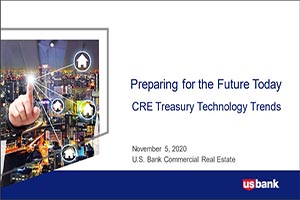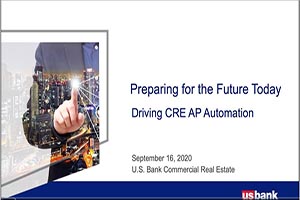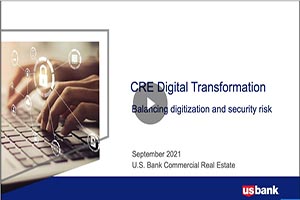
European outlook: Trustee experience more important than ever

Putting home ownership within reach for a diverse workforce

How liquid asset secured financing helps with cash flow

Administrator accountability: 5 questions to evaluate outsourcing risks

Capitalizing on growth in the private equity space

Renewing your custody contracts? Negotiate the fees.

The ongoing evolution of custody

3 innovative approaches to ESG investing in Europe

Case study: U.S. asset manager expands to Europe

Key considerations for launching an ILP

A first look at the new fund of funds rule

Interval funds find growing popularity

Alternative assets: Advice for advisors

Custody or safekeeping: What’s the right solution for government investments?

High-yield bond issuance: how to avoid 5 common pain points

Easing complex transactions: Project finance case studies

High-yield bond issuance: 5 traits lawyers should look for in a service provider

Easier onboarding: What to look for in an administrator

ESG-focused investing: A closer look at the disclosure regulation

Maximizing your infrastructure finance project with a full suite trustee and agent

3 tips to maintain flexibility in supply chain management

How to maximise your infrastructure finance project

Top 3 considerations when selecting an IPA partner

5 questions you should ask your custodian about outsourcing

How to choose the right custodian for your managed assets

Insource or outsource? 10 considerations

10 ways a global custodian can support your growth

The reciprocal benefits of a custodial partnership: A case study

The benefits of a full-service warehouse custodian

The unsung heroes of exchange-traded funds

4 questions you should ask about your custodian

Refining your search for an insurance custodian

Service provider due diligence and selection best practices

Preparing for your custodian conversion

Evaluating interest rate risk creating risk management strategy

What is CSDR, and how will you be affected?

Webinar: CRE technology trends

Avoiding the pitfalls of warehouse lending

Complying with changes in fund regulations

Business risk management for owners of small companies

Webinar: CSM corporation re-thinks AP

Webinar: AP automation for commercial real estate

Addressing financial uncertainty in international business

5 winning strategies for managing liquidity in volatile times

The future of financial leadership: More strategy, fewer spreadsheets

Employee benefit plan management: trustee vs. custodian

Protecting cash balances with sweep vehicles

Choosing your M&A escrow partner

OCIO: An expanding trend in the investment industry

Delivering powerful results with SWIFT messaging and services

Look to your custodian in times of change

How institutional investors can meet demand for ESG investing

Managing complex transactions: what your corporate trustee should be doing

High-cost housing and down payment options in relocation

Why retail merchandise returns will be a differentiator in 2022

4 benefits of independent loan agents

At your service: outsourcing loan agency work

The client-focused mindset: How to network effectively

The client-focused mindset: Adapting to differing personality types

Middle-market direct lending: Obstacles and opportunities

The client-focused mindset: What do clients expect?

How RIAs can embrace technology to enhance personal touch

Webinar: CRE Digital Transformation – Balancing Digitization with cybersecurity risk

An asset manager’s secret to saving time and money

Crypto + Relo: Mobility industry impacts

For today's relocating home buyers, time and money are everything

Empowering team members

10 tips on how to run a successful family business

Business tips and advice for Black entrepreneurs

Opening a business on a budget during COVID-19

How to test new business ideas

How to get started creating your business plan

How to redefine challenges with business collaboration

The role of ethics in the hiring process

8 ways to increase employee engagement

How to reward employees and teams who perform well

How to hire employees: Employee referral vs. external hiring

Give a prepaid rewards card for employee recognition

5 steps for creating an employee recognition program

Tips for building a successful customer loyalty program

Checklist: Increase lead generation with website optimization

Omnichannel retail: 4 best practices for navigating the new normal

Is your restaurant Google-friendly?

Gift cards can extend ROI into 2022

What you should know about licensing agreements

3 simple brand awareness tips for your business

How a small business owner is making the workplace work for women

The growing importance of a strong corporate culture

Business credit card 101

Meet your business credit card support team

How to apply for a business credit card

How jumbo loans can help home buyers and your builder business

Prioritizing payroll during the COVID-19 pandemic

Break free from cash flow management constraints

5 tips for managing your business cash flow

Improve online presence your business

How Shampoo’ed is transforming hair and inspiring entrepreneurs

The San Francisco bridal shop that’s been making memories for 30 years

How Al’s Breakfast is bringing people together

In a digital world, Liberty Puzzles embraces true connection

Celebrity Cake Studio’s two decades of growth and success

How a group fitness studio made the most of online workouts

How Wenonah Canoe is making a boom in business last

How community gave life to lifestyle boutique Les Sol

How a travel clothing retailer is staying true to its brand values

How a bar trivia company went digital during COVID-19

How to build a content team

Use this one simple email marketing tip to increase your reach

How (and why) to get your business supplier diversity certification

Do I need a financial advisor?

Year-end financial checklist

Retirement expectations quiz

Retirement income planning: 4 steps to take

7 year-end tax planning tips

A guide to tax diversification and investing

Bull and bear markets: What do they mean for you?

Investing myths: Separating fact from fiction in investing

What Is a 401(k)?

ETF vs. mutual fund: What’s the difference?

5 financial benefits of investing in a vacation home

What are alternative investments?

4 times to consider rebalancing your portfolio

Effects of inflation on investments

How much money do I need to start investing?

7 diversification strategies for your investment portfolio

4 major asset classes explained

Understanding yield vs. return

How to start investing to build wealth

5 questions to help you determine your investment risk tolerance

What type of investor are you?

Investment strategies by age

A beginner's guide to investing

Can fantasy football make you a better investor?

4 strategies for coping with market volatility

How do interest rates affect investments?

Webinar: Uncover the cost: International trip

Tips to overcome three common savings hurdles

How having savings gives you peace of mind

Helpful tips for safe and smart charitable giving

Allowance basics for parents and kids

30-day adulting challenge: Financial wellness tasks to complete in a month

5 tips to use your credit card wisely and steer clear of debt

Travel for less: Smart (not cheap) ways to spend less on your next trip

Real world advice: How parents are teaching their kids about money

How to stop living paycheck to paycheck post-pay increase

Practical money tips we've learned from our dads

6 ways to spring clean your finances and save money year-round

How to cut mindless spending: real tips from real people

How to increase your savings

How grandparents can contribute to college funds instead of buying gifts

How to open and invest in a 529 plan

5 tips to use your credit card wisely and steer clear of debt

How to use debt to build wealth

4 ways to free up your budget (and your life) with a smaller home

Get more home for your money with these tips

Can you take advantage of the dead equity in your home?

4 questions to ask before you buy an investment property

How to spot a credit repair scam

